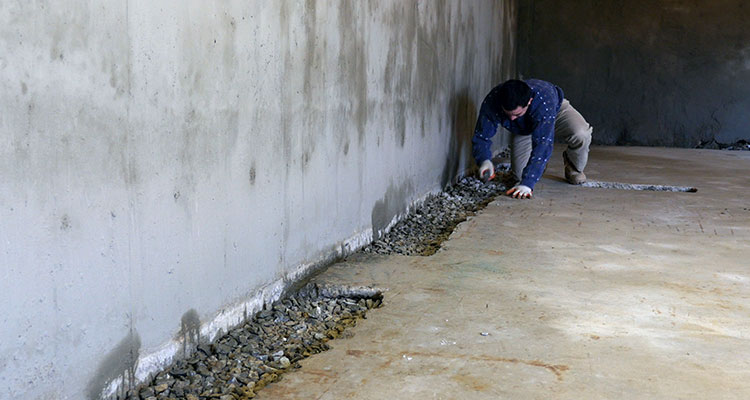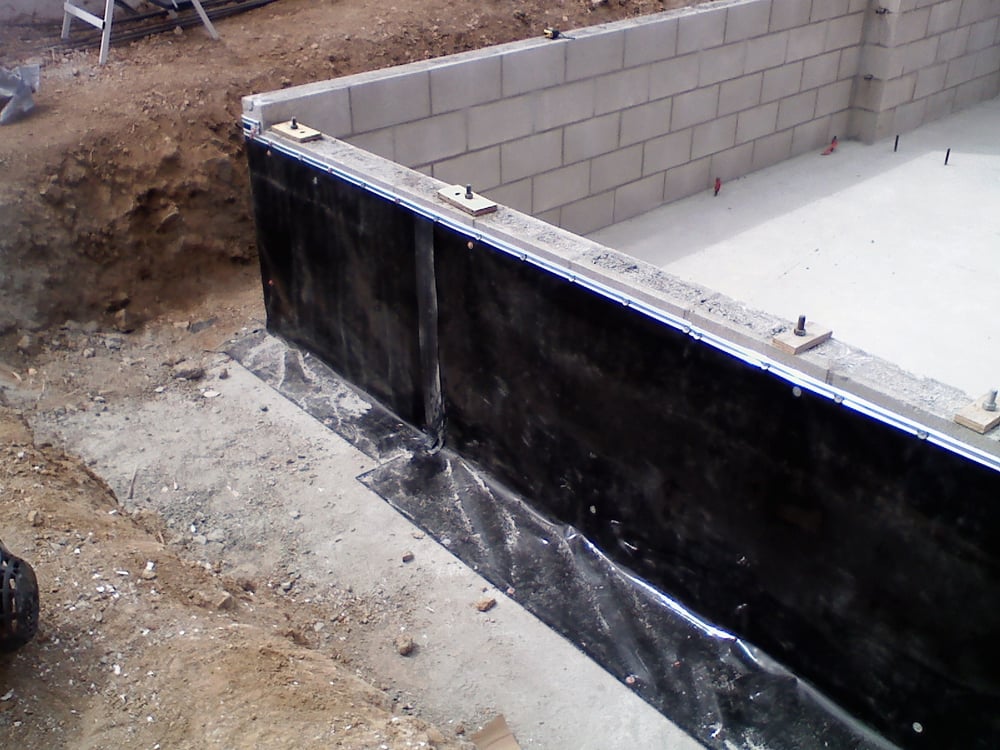Types of Waterproofing: Discovering the Different Approaches and Their Applications
Waterproofing is a vital aspect of building and maintenance. It shields structures from the damaging results of water damages. There are numerous approaches readily available, each with its one-of-a-kind applications and benefits. From membrane systems to cementitious options, understanding these alternatives is essential for efficient implementation. The choice of waterproofing method can considerably impact longevity and long life. Discovering these various techniques discloses their distinctive benefits and possible obstacles, triggering additional factor to consider of perfect services.
Membrane Waterproofing Equipments
Membrane layer waterproofing systems act as an essential obstacle against water intrusion in various frameworks. These systems normally consist of thin sheets made from products like rubber, polycarbonate, or asphalt, which are related to surfaces to avoid wetness penetration. They can be mounted over or below grade and are particularly efficient in areas prone to high water direct exposure, such as basements, roof coverings, and foundations.The installment procedure entails cleaning the substrate, using adhesives or guides, and specifically fitting the membrane layer to assure full protection. Membrane layer systems can be either totally stuck, mechanically connected, or laid loose, relying on the specific demands of the job. They supply toughness and versatility, fitting structural movements without compromising their waterproofing abilities. These systems can be reinforced with added layers for improved security. Ultimately, membrane waterproofing systems are important for protecting frameworks against water damage and preserving long-lasting stability.
Liquid-Applied Waterproofing Coatings
Liquid-applied waterproofing finishings provide a versatile solution for protecting surfaces from water infiltration - Water Solutions Omaha. These finishings consist of liquid materials that, when applied, develop a smooth, adaptable membrane. Their adaptability enables application on various substrates, consisting of concrete, metal, and timber. The layers can be utilized in diverse atmospheres, from domestic to commercial settings, making them ideal for roofings, structures, and below-grade structures.One substantial benefit of liquid-applied coatings is their capacity to adapt to irregular shapes and pass through cracks, creating a robust obstacle against moisture. They typically exhibit exceptional bond properties and resistance to UV radiation, making certain longevity and sturdiness. Furthermore, the application procedure is generally simple, permitting for fast installation and reduced labor expenses. This method also minimizes the danger of water merging, as the constant layer efficiently directs water away from at risk locations. On the whole, liquid-applied waterproofing coverings are a reliable selection for thorough water security
Cementitious Waterproofing Solutions

Cementitious waterproofing services supply a durable alternative for frameworks requiring trusted moisture defense. These systems mostly utilize a mix of cement, sand, and chemical additives to produce a water-proof barrier. They are typically related to surface areas such as concrete walls, structures, and floorings, supplying a resilient, long-lasting defense against water intrusion.One of the crucial benefits of cementitious waterproofing is its simplicity of application; it can be used using a brush, roller, or spray, waterproofing exterior brick walls making it appropriate for numerous project sizes. In addition, this method works with many surface areas and can commonly be utilized combined with various other waterproofing techniques.Cementitious remedies are especially efficient in atmospheres where water exposure is an issue, such as cellars or below-grade structures. Their excellent bond buildings guarantee that they bond well with substratums, offering a solid and nonporous layer against wetness infiltration.
Bentonite Waterproofing
Bentonite waterproofing is a very reliable approach that utilizes salt bentonite clay to develop a natural barrier against water. This strategy exploits the unique residential or commercial properties of bentonite, which broadens upon contact with water, sealing any kind of prospective leaks and preventing wetness infiltration. It is commonly made use of in different applications, including structure wall surfaces, tunnels, and keeping walls, where water resistance is essential.Bentonite can be applied in numerous types, such as panels or coverings, providing flexibility in installation. Its ability to self-seal makes it an attractive alternative for areas subject to moving soil or changing water degrees. Furthermore, bentonite waterproofing is eco pleasant, as it is a natural product that does not present dangerous chemicals right into the environments.
Drain and External Waterproofing Solutions
Reliable waterproofing often entails a mix of strategies, including water drainage and outside systems. Water drainage systems, such as French drains pipes and sump pumps, are designed to redirect water far from frameworks, minimizing hydrostatic pressure against structures. These systems are vital in preventing water buildup that can bring about structural damages and mold and mildew growth.External waterproofing, on the other hand, involves applying safety obstacles to the structure's outside. Strategies such as the setup of waterproof membrane layers, layers, or sealers can aid protect against water seepage. This technique not just shields the structure however likewise boosts the overall resilience of the structure.Together, water drainage and exterior waterproofing systems create a detailed service to handle water efficiently. By applying these methods, building owners can safeguard their investments versus the harmful next page results of dampness, ensuring long-term security and safety for their structures.
Frequently Asked Questions
Exactly how Do I Select the Right Waterproofing Approach for My Task?
Choosing the appropriate waterproofing method relies on elements such as job type, environmental problems, spending plan, and preferred durability. Examining these elements enables for notified decisions tailored to specific needs and requirements.

Can Waterproofing Be Applied in Cold Weather Conditions?
Waterproofing can be used in winter problems, yet it calls for details materials and methods. Find Out More Cold temperatures might impact healing times and bond, necessitating cautious selection of items made for low-temperature application.
What Are the Typical Signs of Waterproofing Failing?
Common signs of waterproofing failure include visible water spots, peeling paint, damp smells, mold and mildew growth, and cracks in walls or structures. Foundation waterproofing Omaha. These signs recommend that wetness is passing through the barrier, compromising its effectiveness
How Long Does Waterproofing Last Prior To Requiring Maintenance?
The durability of waterproofing varies, generally lasting in between 5 to one decade. Elements such as material top quality, environmental problems, and upkeep methods influence its longevity, necessitating regular assessments to ensure efficient protection versus water invasion.
Exist Eco-Friendly Waterproofing Options Available?
The inquiry of environmentally friendly waterproofing alternatives discloses an expanding interest in lasting products (Water Solutions Omaha). Numerous all-natural substances, such as plant-based sealants and recycled items, supply efficient remedies while lessening ecological effect, attracting environmentally conscious consumers